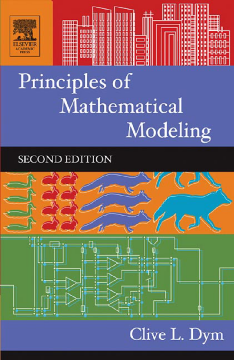
Additional Information
Book Details
Abstract
Science and engineering students depend heavily on concepts of mathematical modeling. In an age where almost everything is done on a computer, author Clive Dym believes that students need to understand and "own" the underlying mathematics that computers are doing on their behalf. His goal for Principles of Mathematical Modeling, Second Edition, is to engage the student reader in developing a foundational understanding of the subject that will serve them well into their careers.
The first half of the book begins with a clearly defined set of modeling principles, and then introduces a set of foundational tools including dimensional analysis, scaling techniques, and approximation and validation techniques. The second half demonstrates the latest applications for these tools to a broad variety of subjects, including exponential growth and decay in fields ranging from biology to economics, traffic flow, free and forced vibration of mechanical and other systems, and optimization problems in biology, structures, and social decision making.
Prospective students should have already completed courses in elementary algebra, trigonometry, and first-year calculus and have some familiarity with differential equations and basic physics.
- Serves as an introductory text on the development and application of mathematical models
- Focuses on techniques of particular interest to engineers, scientists, and others who model continuous systems
- Offers more than 360 problems, providing ample opportunities for practice
- Covers a wide range of interdisciplinary topics--from engineering to economics to the sciences
- Uses straightforward language and explanations that make modeling easy to understand and apply
New to this Edition:
- A more systematic approach to mathematical modeling, outlining ten specific principles
- Expanded and reorganized chapters that flow in an increasing level of complexity
- Several new problems and updated applications
- Expanded figure captions that provide more information
- Improved accessibility and flexibility for teaching
"...one of the best introductory texts in mathematical modeling which the reviewer warmly recommends to anyone who wishes to learn the foundations of mathematical modeling with enjoyment."
-Yuri V. Rogovchenko, in ZENTRALBLATT FUR MATHEMATIK, 2005
"...a delightfully readable, well-written account...The many examples treated in the text are drawn from the practical world that engineers inhabit..."
- Robert Borelli, Harvey Mudd College
"The book itself is marvelously interdisciplinary, treating biological and human designed systems in addition to physical systems."
- Bill Wood, University of Maryland at Baltimore
